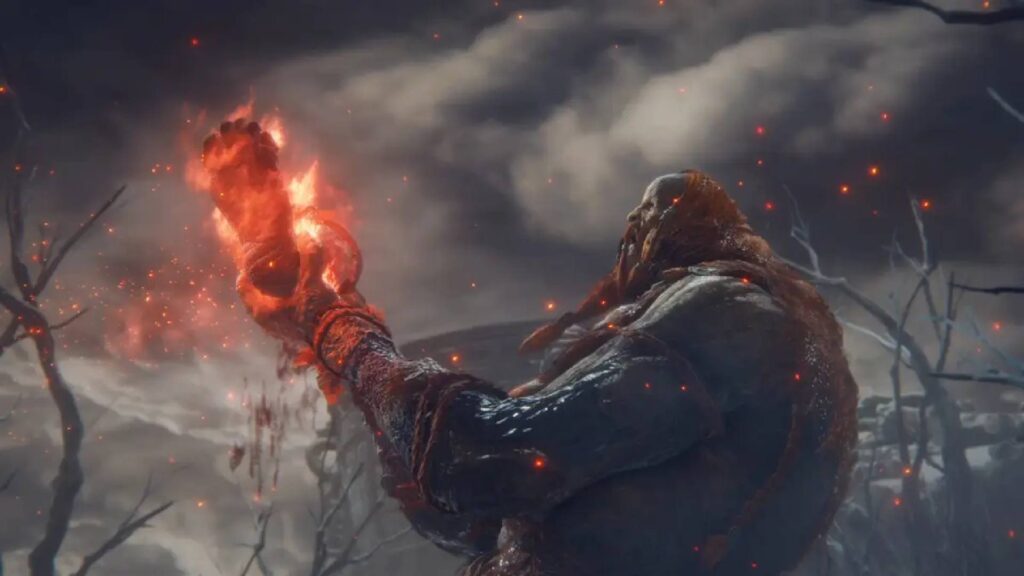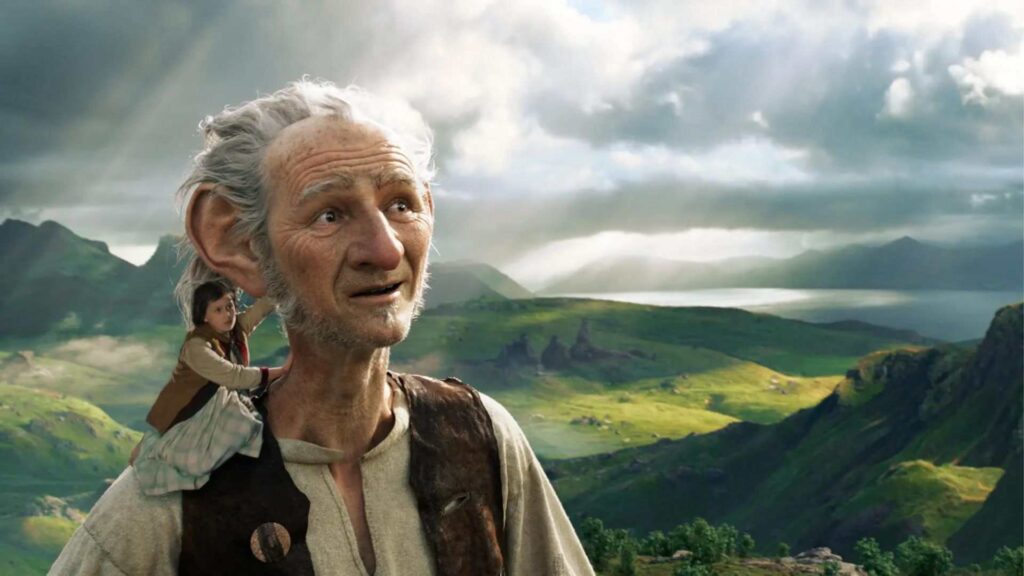Giants, the towering figures of myth and legend, have fascinated humanity for centuries. These colossal beings, often depicted as enormous and powerful, appear in numerous cultures’ folklore, mythology, and religious texts.
From the frost giants of Norse mythology to the biblical Nephilim and even the giants of popular culture like Goliath, these names evoke a sense of awe and wonder. This article will explore the intriguing realm of giant names, uncovering the stories and significance behind these colossal figures that have left an indelible mark on our collective imagination.
Choosing the perfect names for giants can be a creative process. Here are some tips to help you come up with fitting and memorable names:
- Think about the giant’s appearance, personality, and any unique traits they possess. Use these features as inspiration for their name.
- Look into different cultures’ myths and legends involving giants. Names from these stories can add depth and authenticity to your giant characters.
- Incorporate words related to size, strength, or magnitude into their names, such as Goliath, Titan, or Colossus.
- Choose adjectives that convey the giant’s essence, like Thunderous, Stalwart, or Mighty.
- Combine words or phrases from different languages to create a unique and exotic-sounding name. Be sure the meaning aligns with the character.
- If your giants live in specific regions or climates, use names inspired by their surroundings. For example, Frostbite for a giant in a snowy land.
- Ensure the name is easy to pronounce and remember, avoiding overly complex or confusing choices.
Names for Giants
- Goliath
- Titanos
- Colossus
- Magnus
- Thundertop
- Stoneheart
- Grimwald
- Frostbite
- Stormcrusher
- Thunderclap
- Hulkbane
- Boulderbeard
- Ironhide
- Verdant
- Skysmasher
- Earthshaker
- Fireforge
- Avalanche
- Rumblejaw
- Frostfang
- Brimstone
- Cliffbreaker
- Rockslide
- Moltenfist
- Thunderhoof
- Stormwater
- Treetoppler
- Mountainmaw
- Skyrend
- Oakenheart

Female Giant Names
These names often carry a sense of strength and grace. “Iceheart,” a name that evokes the image of a powerful and elegant female giant.
- Valkyria
- Grenda
- Solstice
- Frosting
- Storm
- Thunderella
- Gaia
- Stonewind
- Aurora
- Seraphina
- Sylvara
- Magnara
- Terraquake
- Iceheart
- Emberlyn
- Windwhisper
- Brynhilda
- Tempestia
- Lysandra
- Thundershield
- Crystella
- Fjordra
- Verdantia
- Moltena
- Avalara
Male Giant Names
These names tend to be robust and authoritative, reflecting the might of male giants”Thorne,” a name that conveys a sense of rugged power.
- Gromgar
- Thorne
- Haldor
- Rurik
- Grimlok
- Valthor
- Keldrin
- Brystan
- Volsung
- Harlak
- Svardak
- Brynnar
- Faldrik
- Eirikur
- Skarnar
- Olafur
- Bjornulf
- Gyrthor
- Thranor
- Hrothgar
Cute Giant Names
These names are endearing and charming, contrasting the stereotypical image of giants.”Bumble,” is a name that makes a giant seem approachable and friendly.
- Snuggletoes
- Gigglesnatch
- Puddlefist
- Cuddlekins
- Fluffybreeze
- Dimplegrin
- Fuzzyhug
- Tummy rubs
- Marshmallow
- Sparkletoes
- Glimmergaze
- Bumble
- Softpaws
- Sunnywhisk
- Gingersnap
- Twinklebelly
- Buttercup
- Silkywhisker
- Dandelion
- Lullabreeze
- Honeydew
- Snickerdoodle
- Petalheart
- Bubblemunch
- Puddlejumper
- Velvetear
- Hugsnuggle
- Cozywhisk
- Squeakynose
- Plushykins

Frost Giant Names
Frost giants inhabit icy realms, so their names often incorporate cold or wintry elements.”Frostgrim,” is a name that hints at the frigid nature of these giants.
- Frostgrim
- Icemaw
- Glacialdrake
- Snowstrider
- Frostbite
- Coldheart
- Icefury
- Blizzarok
- Frostclaw
- Glacius
- Snowrend
- Frostflame
- Winterbourne
- Iceshadow
- Frosthammer
- Frostwraith
- Blizzardrider
- Frostfang
- Coldsteel
- Glacialwind
- Icebreaker
- Frostborn
- Snowfall
- Frostbeard
- Glaciershield
- Icestorm
- Snowflurry
- Frostcrown
- Coldforge
- Icerender
- Frostquill
- Glacialhorn
- Snowthorn
- Frostcloak
- Icegrinder
- Coldstalker
- Frostshadow
- Snowshaper
- Iceshaper
- Frostbrand
Funny Giant Names
These names bring humour to the idea of giants, adding a lighthearted twist. “Jollygiant,” a name that playfully suggests a giant with a sense of humour.
- Guffawstone
- Chucklesaurus
- Jollygiant
- Bellylaugh
- Wobblekins
- Gigglepaws
- Chucklechunks
- Snickersnatch
- Mirthquake
- Garglegrin
- Chucklenose
- Bellywiggle
- Hilaridon
- Gigglesniffer
- Bumblechortle
- Snortlebelly
- Chuckleflop
- Tummytickle
- Wobblewhisk
- Giggletummy
- Snickerclap
- Chucklewhirl
- Hootslobber
- Bumbleguff
- Chortleslap
- Gobblenose
- Snickerslap
- Wobblegiggle
- Chucklecrash
- Guffawflap
Famous Giant Names
These names could be inspired by giants from mythology, literature, or pop culture.”Goliath” was inspired by the famous giant defeated by David in the Bible.
- Argus – A giant with countless eyes, a guardian figure in Greek mythology.
- Goliath: A biblical giant defeated by David with a slingshot.
- Cyclops: One-eyed giants from Greek mythology.
- Hagrid: A lovable giant from the Harry Potter series.
- Grawp: Hagrid’s half-brother, another giant from Harry Potter.
- Fezzik: The gentle giant in “The Princess Bride” by William Goldman.
- Andre the Giant: A famous wrestler and actor known for his enormous size.
- Frost Giants: Ice giants from Norse mythology, including Jotnar.
- Ogres: Large, humanoid creatures from various folktales.
- The BFG (Big Friendly Giant): A character from Roald Dahl’s book.
- Mag the Mighty: A Giant from the Game of Thrones series.
- Hekatonkheires: Hundred-handed giants in Greek mythology.
- Polyphemus: The Cyclops who encountered Odysseus in Homer’s “The Odyssey.”
- Gargantua: A giant from French Renaissance literature.
- Gulliver: The protagonist in Jonathan Swift’s “Gulliver’s Travels.”
- Firbolgs: Giants from Irish mythology.
- Grendel: A monstrous giant in the epic poem “Beowulf.”
- Troll: Scandinavian folklore creatures are often depicted as giants.
- Jotunheim: The realm of the Frost Giants in Norse mythology.
- Green Giant: Mascot for the vegetable company Jolly Green Giant.
- Atlas: A Titan in Greek mythology known for holding up the sky.
- Humbaba: A giant guardian in the Epic of Gilgamesh.
- Paul Bunyan: A legendary giant lumberjack in American folklore.
- The Iron Giant: A character from the animated film of the same name.
- Colossus of Rhodes: An ancient giant statue of the sun god Helios.
- Clash of the Titans: Movie featuring various Greek mythological giants.
- Giant Panda: A beloved species of bear known for its size.
- Gigantopithecus: An extinct genus of giant apes.
- Jack and the Beanstalk: The classic fairy tale with a giant at its core.
- Briareos: One of the Hekatonkheires from Greek mythology.
- Ymir: An ancient giant in Norse mythology.
- Yao Ming: A retired NBA player known for his towering height.
- Oberon: A fairy king sometimes depicted as a giant.
- Giant Squid: Enormous deep-sea cephalopods.

Stone Giant Names
Stone giants are often depicted as living statues, so their names may reference stone or rock. “Granitus,” a name that alludes to the stony nature of these giants.
- Granitus
- Petrak
- Stoneheart
- Gorgar
- Stalagor
- Geodeus
- Cragspire
- Boulderforge
- Stonewarden
- Quartzar
- Micael
- Pebblekin
- Rockhewer
- Obsidianus
- Limestone
- Gneissar
- Slatebreaker
- Onyxus
- Graveltide
- Basaltor
- Flintrock
- Granitejaw
- Sandstone
- Slategrasp
- Cobbleborn
- Schistram
- Marblevein
- Gabbroth
- Fossilhelm
- Siltstone
- Feldspar
- Shalebeard
- Glimmerstone
- Pebblestride
- Dolomite
- Chalk cliffs
- Pyriteclad
- Pumicegaze
- Magmaforge
- Pebbleshine
How would you characterized the Giant's Personality?
Characterizing the personality of a giant can be a fascinating endeavour, as it involves delving into the realm of folklore, literature, and mythology, where these colossal beings often make their appearances. Giants have been depicted in various ways across different cultures and eras, but some common traits emerge when we examine their personalities.
One of the most prevalent characteristics of giants is their immense physical strength. Giants are typically portrayed as towering figures with the power to move mountains and uproot trees effortlessly. This immense physical prowess often leads to perceiving giants as formidable and sometimes even fearsome. They are often depicted as protectors of their territory, capable of great acts of destruction and defence.
However, giants aren’t solely defined by their physical might. Many stories and myths also attribute intelligence to these gigantic beings. Giants are often seen as cunning and resourceful, using their wits to outsmart adversaries. In Norse mythology, for example, the giant Loki is known for his clever and sometimes mischievous nature. At the same time, the Greek myth of Prometheus portrays a giant-like figure who defied the gods through his intelligence and cunning.
Another fact of the giant’s personality is their relationship with humans. Giants are often portrayed as beings living in remote and secluded places on the fringes of human society. This isolation can lead to loneliness and estrangement, and giants may be depicted as longing for human contact or even forming bonds with individual humans. This aspect of their personality can evoke sympathy and complexity in their characterizations.
In literature and popular culture, giants are versatile characters capable of embodying various personalities. They can be portrayed as wise mentors, menacing antagonists, or even tragic figures burdened by their immense size and strength. The way giants are characterized often depends on the cultural context and the specific narrative in which they appear.
Conclusion
Giant names often reflect the grandeur and mystique of these colossal beings. Whether drawn from ancient mythology, literature, or creatively invented, these names emphasize the size, strength, and sometimes the personalities of giants.
From the menacing and fearsome to the gentle and wise, giant names offer a glimpse into the rich and imaginative worlds in which these creatures reside. Regardless of their monikers, giants continue to captivate our imaginations and remind us of the awe-inspiring wonders that fantasy and folklore can bring to life.
